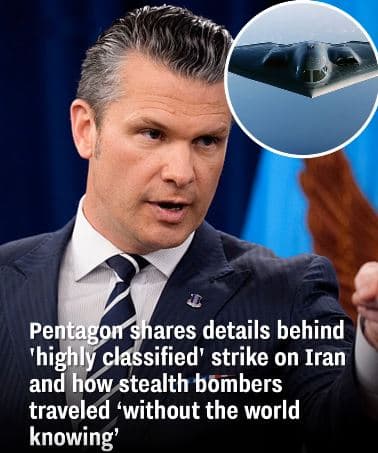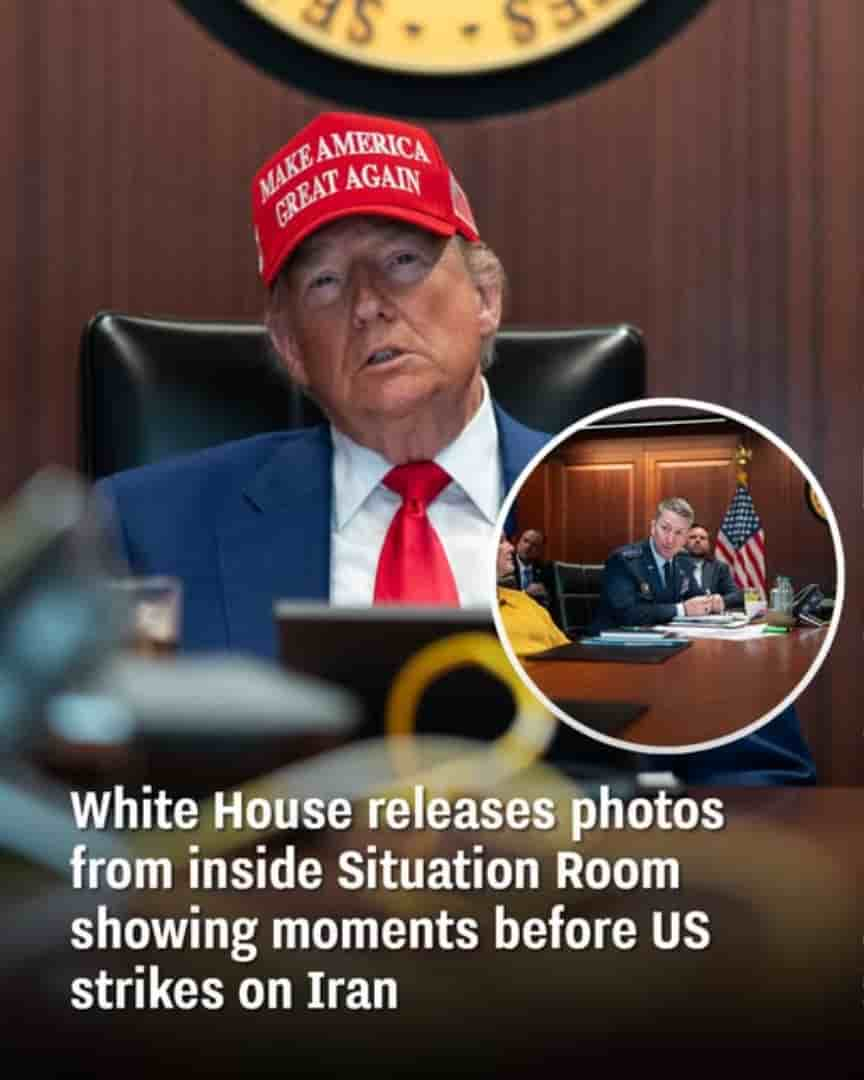OPERATION MIDNIGHT HAMMER: DECONSTRUCTING THE MOST COMPLEX MILITARY OPERATION OF THE 21ST CENTURY AND ITS IMPLICATIONS FOR MODERN WARFARE
The orchestration of Operation Midnight Hammer represents the pinnacle of modern military planning, coordination, and execution—a masterpiece of strategic deception, technological integration, and operational precision that involved over 125 aircraft, hundreds of personnel, and multiple deception tactics spanning thousands of miles and lasting 18 hours from launch to completion. This unprecedented military operation has redefined expectations for power projection, strategic surprise, and the integration of multiple domains of warfare into a single cohesive campaign that achieved its objectives while demonstrating American military capabilities to global audiences.
The complexity of coordinating stealth bombers launching from the continental United States, submarine-launched cruise missiles, fighter aircraft providing protection and suppression, aerial refueling operations across multiple time zones, and sophisticated deception plans that fooled even close observers reveals the extraordinary sophistication of contemporary American military capabilities. Understanding the full scope of Operation Midnight Hammer requires examining not only its immediate tactical execution but also the years of planning, technological development, and strategic thinking that made such an operation possible.
THE STRATEGIC ARCHITECTURE OF DECEPTION
The foundation of Operation Midnight Hammer’s success lay in sophisticated deception operations that began long before the first aircraft launched from American soil. The strategic surprise achieved despite global surveillance capabilities and social media documentation demonstrates advanced understanding of how to conduct military operations in an era of unprecedented transparency and real-time information sharing.
Defense Secretary Pete Hegseth’s claim that “Our B-2s went in and out of these nuclear sites, in and out and back without the world knowing at all” initially seemed contradicted by social media posts showing aircraft movements. However, this apparent contradiction reveals sophisticated deception planning where visible aircraft movements served as misdirection for the actual operational timeline and targeting priorities.
The decision to route part of the strike package westward into the Pacific as a decoy represents complex operational planning that required precise coordination to maintain tactical surprise while managing the enormous logistical challenges of global power projection. This deception effort, known only to “an extremely small number of planners and key leaders,” demonstrates compartmented planning that protected operational security while enabling complex coordination.
The timing of public disclosure versus actual operations reveals additional layers of deception, where social media observations of aircraft movements occurred during preparatory phases rather than actual strike operations. This temporal separation between visible preparations and actual attacks created confusion about operational timing that contributed to tactical surprise.
The integration of multiple deception tactics—geographic misdirection, temporal confusion, and false targeting priorities—created a comprehensive deception plan that succeeded despite operating in an environment of global surveillance and instant communication. This success validates sophisticated understanding of how to achieve surprise in modern warfare.
TECHNOLOGICAL INTEGRATION AND MULTI-DOMAIN COORDINATION
Operation Midnight Hammer showcased unprecedented integration of capabilities across multiple domains of warfare, demonstrating how modern military operations combine air, sea, cyber, and space assets into synchronized campaigns that achieve effects greater than the sum of their individual components.
The coordination between B-2 stealth bombers launching from the continental United States and submarine-launched Tomahawk missiles required precise timing and communication systems that functioned reliably across thousands of miles and multiple time zones. This coordination demonstrates advanced command and control capabilities that enable global operations with minute-by-minute precision.
The employment of fourth and fifth-generation fighter aircraft in protective and suppression roles required real-time coordination with bomber operations while maintaining deception plans and operational security. These fighter assets provided both defensive protection and offensive suppression of enemy air defenses, creating corridors for bomber penetration.
Aerial refueling operations involving “dozens and dozens of air refueling tankers” enabled the 18-hour mission duration while maintaining operational flexibility and security. The logistical complexity of coordinating multiple refueling operations across international airspace while maintaining mission security represents significant operational achievement.
Intelligence, surveillance, and reconnaissance assets provided real-time battlespace awareness and target verification while also supporting battle damage assessment and force protection throughout the operation. The integration of these capabilities with strike operations required sophisticated data fusion and communication systems.
The employment of cyber warfare capabilities, while not explicitly detailed in public reporting, likely included electronic warfare systems designed to suppress Iranian air defenses and communication systems. This cyber dimension represents crucial integration of non-kinetic effects with conventional military operations.
THE SUBMARINE DIMENSION: UNDERSEA WARFARE INTEGRATION
The role of guided missile submarines in Operation Midnight Hammer demonstrates the strategic value of undersea platforms for power projection and their integration with air operations in ways that maximize surprise and operational effectiveness. The timing of submarine-launched Tomahawk missiles relative to air operations reveals sophisticated coordination between different service branches and operational domains.
The submarine’s position in the Central Command area of responsibility provided launch capabilities that bypassed Iranian air defense systems while enabling precision strikes against surface infrastructure targets at Isfahan. This positioning demonstrates strategic planning that anticipated Iranian defensive capabilities and developed countermeasures.
The launch of “more than two dozen Tomahawk land attack cruise missiles” just prior to the strike package entering Iranian airspace served multiple operational purposes: suppressing defensive capabilities, creating additional targeting confusion, and providing redundant strike capabilities against critical infrastructure components.
The coordination between submarine operations and air operations required secure communication systems and precise timing that functioned despite the challenges of communicating with submerged platforms during combat operations. This coordination demonstrates advanced command and control capabilities that enable joint operations across multiple domains.
The strategic value of submarine-launched strikes includes their ability to approach targets from unexpected directions while maintaining platform survivability and operational flexibility. This capability provides operational commanders with additional options for strike timing and targeting that complement air operations.
PRECISION WEAPONS AND TARGET DESTRUCTION
The employment of 75 precision-guided weapons during Operation Midnight Hammer, including 14 GBU-57 Massive Ordnance Penetrator bombs weighing 30,000 pounds each, demonstrates the scale of destructive force required to achieve decisive effects against hardened underground nuclear facilities.
The selection of specific weapons for different targets reflects detailed intelligence analysis and weapons-target matching that optimizes destructive effects while minimizing operational risks. The use of bunker-buster bombs against deeply buried facilities like Fordow required specialized weapons designed for maximum penetration and underground effectiveness.
The timing sequence of weapons employment—beginning with Tomahawk missiles against surface infrastructure and culminating with massive ordnance penetrators against underground facilities—reveals operational planning that prioritized target vulnerability and defensive suppression.
The precision required to deliver 30,000-pound weapons against specific aim points within underground facilities demonstrates advanced guidance systems and delivery capabilities that enable surgical strikes against high-value targets. This precision minimizes collateral damage while maximizing military effectiveness.
The coordination of multiple weapons systems and delivery platforms required sophisticated battle management systems that could track numerous aircraft and weapons while maintaining operational security and target deconfliction. This coordination represents significant advancement in military command and control capabilities.
GLOBAL POWER PROJECTION AND LOGISTICS
The 18-hour duration of Operation Midnight Hammer from launch to completion demonstrates American capabilities for global power projection that enable military operations against any target worldwide while maintaining high levels of precision and operational security.
The launch of B-2 stealth bombers from the continental United States for operations in the Middle East represents transcontinental power projection that few nations can achieve. This capability provides American decision-makers with options for military action that do not depend on regional basing or alliance support.
Multiple in-flight refueling operations across international airspace required coordination with allied nations and international aviation authorities while maintaining operational security about mission objectives and timing. This coordination demonstrates diplomatic and military integration capabilities.
The logistical support required for operations involving over 125 aircraft includes maintenance personnel, spare parts, fuel supplies, weapons storage, and communication systems that must function reliably across multiple time zones and operational environments.
The operational security requirements for such large-scale operations include communication encryption, personnel security clearances, and compartmented planning that protects sensitive information while enabling necessary coordination between multiple units and commands.
DECEPTION TACTICS AND OPERATIONAL SURPRISE
The sophisticated deception plan underlying Operation Midnight Hammer employed multiple tactics designed to confuse Iranian defenders about the timing, scale, and objectives of American military action while maintaining the operational security necessary for tactical surprise.
The westward routing of aircraft into the Pacific as a decoy operation required actual flight operations that were convincing enough to mislead intelligence observers while not compromising the actual strike mission. This deception demanded real resources and operational planning that paralleled the actual mission.
High-altitude, high-speed fighter sweeps ahead of the strike package served both defensive and deceptive purposes, providing protection against Iranian interceptors while also creating radar signatures that could mislead defensive planners about the composition and objectives of incoming forces.
The temporal separation between visible preparatory activities and actual strike operations created confusion about operational timing that contributed to tactical surprise. Social media observations of aircraft movements occurred during phases that did not reveal actual strike timing or targeting.
The compartmented nature of operational planning, with deception details known only to a small number of senior leaders, demonstrates operational security procedures that protect sensitive information while enabling necessary coordination for complex military operations.
AIRSPACE MANAGEMENT AND DEFENSIVE SUPPRESSION
The penetration of Iranian airspace by American military aircraft required sophisticated planning for airspace management, defensive suppression, and threat mitigation that enabled mission success while protecting American personnel and equipment.
The employment of “high speed suppression weapons” against Iranian surface-to-air missile threats demonstrates proactive defensive measures that neutralize threats before they can engage American aircraft. This suppression capability is crucial for mission success against sophisticated air defense systems.
Fighter aircraft providing “preemptive suppressing fires against any potential Iranian Surface to Air threats” created defensive corridors that enabled bomber operations while maintaining force protection throughout the mission duration.
The coordination of suppression activities with bomber operations required real-time intelligence about Iranian defensive capabilities and precise timing to ensure protective fires occurred when and where needed without compromising operational surprise.
The absence of effective Iranian defensive response, with American commanders reporting no awareness of shots fired at the strike package, suggests successful suppression operations and possibly strategic surprise that prevented coordinated defensive response.
INTELLIGENCE INTEGRATION AND BATTLE DAMAGE ASSESSMENT
The success of Operation Midnight Hammer depended on sophisticated intelligence capabilities that provided detailed understanding of Iranian nuclear facilities, defensive capabilities, and operational patterns that informed targeting decisions and operational planning.
Real-time intelligence during the operation enabled dynamic targeting decisions and threat response while also supporting battle damage assessment that confirmed the achievement of operational objectives. This intelligence integration requires advanced sensors and communication systems.
The employment of “a full array of intelligence surveillance and reconnaissance aircraft” provided comprehensive battlespace awareness that supported both offensive operations and force protection throughout the mission duration.
Target verification and battle damage assessment capabilities enabled operational commanders to confirm the destruction of intended targets while also providing information for post-operation analysis and strategic assessment.
The integration of multiple intelligence sources—human, signals, imagery, and technical—created comprehensive operational pictures that supported decision-making at all levels while maintaining operational security about sources and methods.
INTERNATIONAL IMPLICATIONS AND STRATEGIC MESSAGING
Operation Midnight Hammer serves multiple strategic communication functions beyond its immediate military objectives, demonstrating American military capabilities while sending deterrent messages to potential adversaries and reassurance to allies about American security commitments.
The global scale and complexity of the operation demonstrate American military technological superiority and operational reach that few nations can match. This demonstration affects international strategic calculations and alliance relationships in ways that extend far beyond the immediate Iran context.
The successful penetration of sophisticated air defense systems using stealth technology and electronic warfare validates American investment in advanced military technologies while highlighting the vulnerability of nations dependent on conventional defensive systems.
The precision and restraint demonstrated through surgical strikes against specific facilities sends messages about American capabilities for escalation control and limited military action that can achieve specific objectives without broader conflict escalation.
The operational success achieved despite Iranian defensive preparations and international observation demonstrates American military competence and determination that influences adversary calculations about the costs and risks of challenging American interests.
TECHNOLOGICAL DEMONSTRATION AND CAPABILITY SIGNALING
The public disclosure of operational details from Operation Midnight Hammer serves strategic communication purposes that extend beyond immediate military objectives to encompass broader signaling about American military capabilities and strategic intentions.
The revelation of specific weapons employment, including 14 massive ordnance penetrator bombs and 75 precision-guided weapons, demonstrates destructive capabilities that affect adversary calculations about facility hardening and defensive preparations.
The successful coordination of over 125 aircraft in a single operation demonstrates organizational capabilities and technological integration that few military organizations worldwide can achieve. This demonstration affects international assessments of American military competence.
The 18-hour operational duration from launch to completion showcases global reach capabilities that enable American military action against any target worldwide, affecting strategic calculations of nations considering challenges to American interests.
The sophisticated deception and suppression capabilities demonstrated during the operation validate American investment in electronic warfare and cyber capabilities that are crucial for future military operations in contested environments.
OPERATIONAL CHALLENGES AND LESSONS LEARNED
The complexity of Operation Midnight Hammer created numerous operational challenges that required innovative solutions and demonstrated areas for future improvement in large-scale military operations.
The coordination of operations across multiple time zones and international boundaries required communication systems and procedures that functioned reliably despite technical challenges and security requirements. These coordination challenges highlight the complexity of global military operations.
The integration of multiple service branches and specialized capabilities required joint planning and execution procedures that balanced operational effectiveness with security requirements and resource constraints.
The maintenance of operational security for such a large-scale operation involving hundreds of personnel across multiple commands demonstrates both the possibilities and limitations of compartmented planning for complex military operations.
The achievement of strategic surprise despite global surveillance capabilities and social media documentation provides lessons about deception planning and operational security in contemporary information environments.
FUTURE IMPLICATIONS FOR MILITARY PLANNING
Operation Midnight Hammer establishes precedents and demonstrates capabilities that will influence future military planning and strategic thinking for years to come, affecting both American military development and international responses to American military capabilities.
The successful integration of multiple domains and service branches in a single operation validates joint warfare concepts and demonstrates requirements for future military organization and training programs.
The demonstration of global power projection capabilities affects strategic planning for potential future conflicts while also influencing alliance relationships and burden-sharing arrangements with international partners.
The technological capabilities demonstrated during the operation validate investment priorities and research directions while also highlighting areas where continued development may be necessary to maintain military advantages.
The operational procedures and coordination mechanisms developed for Operation Midnight Hammer provide templates for future complex military operations while also identifying areas for improvement and refinement.

 Breaking News
Breaking News


























